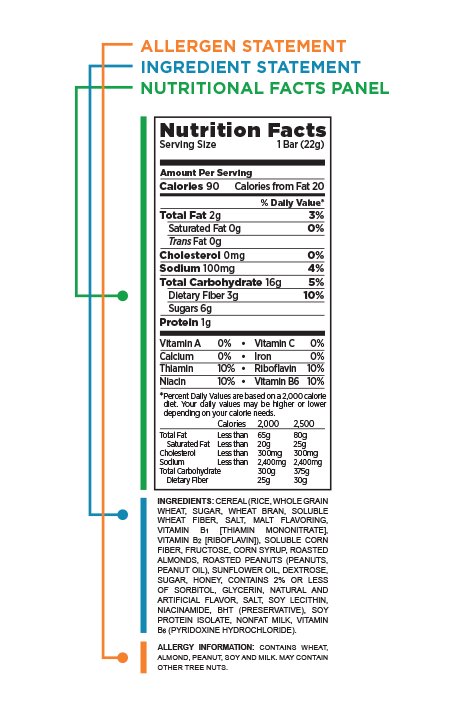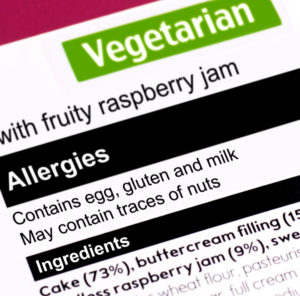Understanding Food Labels & FALCPA Law For Food Allergens
For the food allergy community, understanding how to read packaged and processed food labels is crucial. It is a necessity to managing exposure to allergens, remaining allergen-free and enjoying delicious, safe foods.
FALCPA is here to help. The Food Allergen Labeling and Consumer Protection Act of 2004 ,or FALCPA, is a comprehensive food labeling law that has been in effect in the United States since January 1, 2006. The law’s purpose is to make it easier for consumers with food allergies to avoid processed and packaged foods that contain any of the eight major allergens as identified by the US Food and Drug Administration that cause ninety percent of reactions in Americans. This also includes vitamins and dietary supplements, infant formula and foods, and medical foods.
The eight major food allergens are:
- Milk
- Eggs
- Fin fish (such as bass, flounder, or cod)
- Shellfish (such as crab, lobster, or shrimp)
- Tree nuts (such as almonds, pecans, or walnuts)
- Peanuts
- Wheat
- Soy
The FALCPA law requires food manufacturers to label food products that contain an ingredient that is a major food allergen. This also includes food products containing protein from a major food allergen.

Copyright © Marshfield Clinic
In the above example, FALCPA compliant label language is: “Contains wheat, almond, peanut, soy and milk.”
However, the “may contain” statement above, “May contain other tree nuts.” has a different meaning; it is not required by FALCPA, nor is that language regulated in any way by the FDA.

Copyright © Getty Images
“May contain” – or advisory statements – are voluntary manufacturer statements that are used when there is a chance that a food allergen could be present in a packaged or processed food. For example, if manufacturer uses the same equipment to make different products containing different allergens they might place a “may contain” label on the food to warn consumers that there is a risk of cross contact. Since these labels aren’t regulated, there is a lot of confusion around the safety of these products for consumers with food allergies.
When in doubt, about any product or label, it is always best to contact the manufacturer via email or phone directly about your allergen needs. Remember too that ingredients are subject to change, so please read the label each and every time you wish to consume any packaged or processed food product.
We welcome you to contact us with any specific inquiries about perfectlyfree® products.
Tags: Food Allergy Resources, Sloane Miller
Posted in Contributor, Food Allergy



